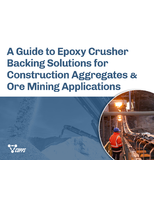ASTM Gypsum Committee developing 3 proposed lath standards.
Press Release Summary:
Developed by task group within Subcommittee C11.02, proposed lath standards will help assure that non-metallic lath products perform adequately, provide means for design professionals to generically specify products, and guide contractors in installation. ASTM WK24554, ASTM WK24555, and ASTM WK24556 standards address test methods, installation, and performance requirements of Non-metallic Plaster Bases (lathe) used with Portland Cement Based Plaster, respectively.
Original Press Release:
ASTM Gypsum Committee Developing Three Proposed New Lath Standards
W. CONSHOHOCKEN, Pa., August 4, 2009-The use of non-metallic plaster bases (lath) is growing in the construction industry, and minimum consensus standards are being set for installation, test methods and performance requirements. A task group within Subcommittee C11.02 on Specifications and Test Methods for Accessories and Related Products is currently developing three lath standards:
ASTM WK24554, Test Method for Non-Metallic Plaster Bases (Lath) Used with Portland Cement Based Plaster;
ASTM WK24555, Specification for Installation of Non-Metallic Plaster Bases (Lath) Used with Portland Cement Based Plaster; and
ASTM WK24556, Specification for Non-Metallic Plaster Bases (Lath) Used with Portland Cement Based Plaster.
Subcommittee C11.02 is part of ASTM International Committee C11 on Gypsum and Related Building Materials and Systems.
According to William Egan, manager, engineering and development, BASF Construction Chemicals LLC-Wall Systems, and a C11 member, each of the proposed new standards will help assure that non-metallic lath products perform adequately, provide a means for design professionals to generically specify products and guide contractors in installation.
"We expect that the proposed standards will be widely used and accepted after they've been approved," says Egan. "However, they're probably of most interest to design professionals, contractors, building owners and building officials."
All interested parties are invited to contribute to the ongoing development of these three work items. "It would be particularly helpful to have input and participation from additional manufacturers of non-metallic lath that currently do not participate in the ASTM standards development process," says Egan.
For technical information, contact: William Egan, BASF Construction Chemicals LLC, Jacksonville, Fla. (phone: 904-996-6115; bill.egan@basf.com). ASTM Committee C11 meets Nov. 9-11 during November Committee Week in Atlanta, Ga.
ASTM International welcomes and encourages participation in the development of its standards. ASTM's open consensus process, using advanced Internet-based standards development tools, ensures worldwide access for all interested individuals. For more information on becoming an ASTM member, please contact Thomas O'Toole, ASTM International (phone: 610-832-9739; totoole@astm.org).
Established in 1898, ASTM International is one of the largest international standards development and delivery systems in the world. ASTM International meets the World Trade Organization (WTO) principles for the development of international standards: coherence, consensus, development dimension, effectiveness, impartiality, openness, relevance and transparency. ASTM standards are accepted and used in research and development, product testing, quality systems and commercial transactions around the globe.
Contact:
Barbara Schindler, ASTM International
100 Barr Harbor Drive, W. Conshohocken, PA 19428
610-832-9603; bschindl@astm.orgwww.astm.org,




